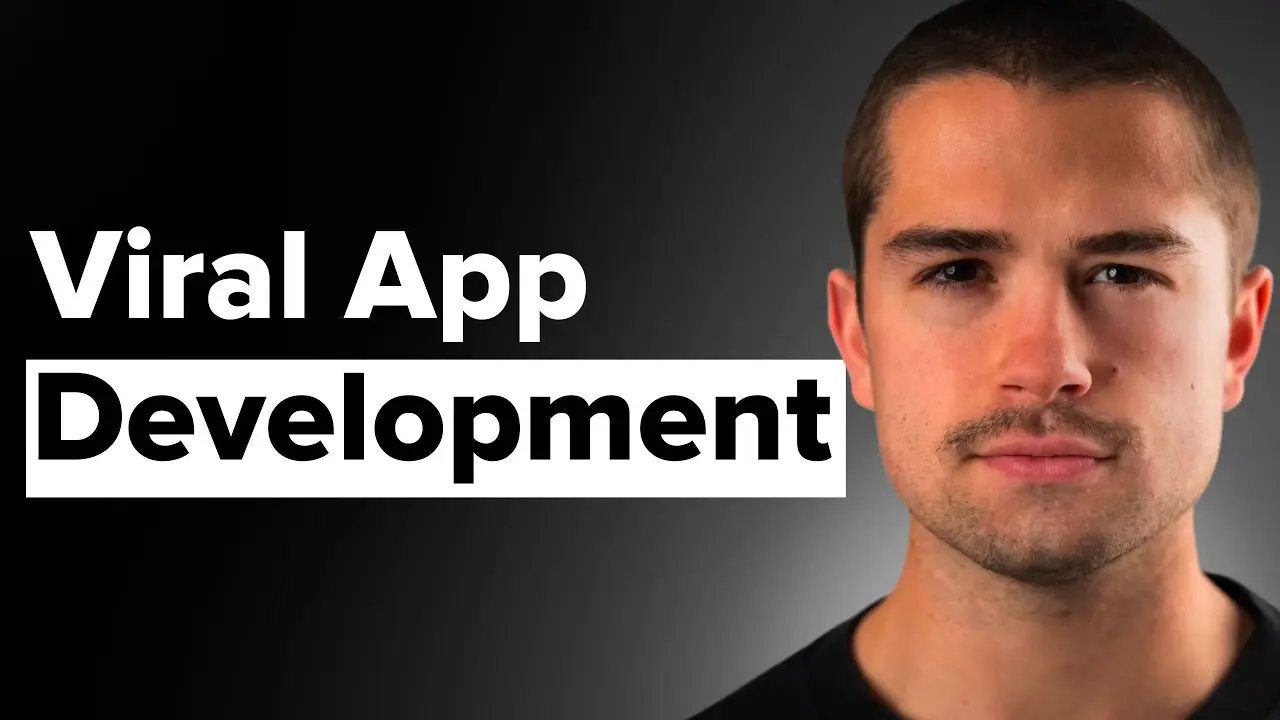Building a viral app isn’t just about having an amazing idea — it’s about reducing friction between your first line of code and that magical moment when millions of people download what you’ve created.
If you missed the previous posts, we're focusing on single-player utility apps in this series. These are apps where social functionality or ultra-complex back ends aren’t required. Here in part 3 of our viral apps series, we're going to cover how to develop viral apps (catch part 1 and 2 here).
While you might not be devising the next revolutionary product, the development phase can still be the most time-intensive and challenging part of launching a successful app. It’s where most people lose momentum, and it's too easy to get lost in the weeds at this phase. But, if you understand a few basic principles and practical methods, you can dramatically accelerate your progress and bring your vision to life.
Below, I'll go over:
Three core principles that shape how you should approach development.
And, three methods that will help you actually build and ship your app.
Whether you’re a seasoned developer seeking to move faster in the future or new to coding and looking for a place to start, these guidelines will help you push through obstacles and deliver something that people can’t wait to download.
The Three Core Principles
Principle 1: Growth Mindset
Contrary to the buzz you might see online, you can’t build a fully market-ready app in an hour using AI alone. At the same time, going from zero to a fully functional app in a month with AI is entirely possible. The biggest factor isn’t the level of your technical skill — to me, it’s your mindset.
Adopt a perspective where you see AI as your tutor and assistant, not as a magical solution that does all the work. Your first version will probably be rough, but you can work to refine it over time. It's always an iterative process, which is crucial. If you can’t produce a feature in a few hours like some “gurus” promise, don’t quit. Conversely, don’t drag your feet and assume your first simple app will take a year to build.
Do what you can now, and refine as you go. Over time, you’ll figure out how to make it work.
Principle 2: Deep Work and Time Blocking
Development requires unwavering focus. If you’re used to the fast-scrolling pace of social media, switching to a deep work mindset can be a shock to the system. Instead of bouncing between messages, notifications, and feeds, you need to block out dedicated chunks of time — such as four hours — where you can code without interruption.
This approach isn’t necessarily about the number of hours you grind, it's about how much focused energy you can invest. Set a clear goal before each session, like “build the camera interface” or “implement the paywall.” Don’t just code aimlessly without a goal in mind. The biggest failure isn’t writing “bad code.” It’s never shipping anything at all because you got distracted and never finished.
Principle 3: Progressive Overload
If you’ve ever lifted weights, you know you start light and work your way up. App development works similarly. Don’t attempt your most complex app right away. Instead, build smaller, simpler apps to learn the fundamentals. Even an embarrassingly basic first version is better than no version. Each time you complete a project, even a tiny one, you’ll glean new skills and be able to scale up to bigger challenges.
Expect to spend hours debugging what should be a minor fix when you’re starting out. But, every small hurdle climbed reduces the time you’ll spend on the same task in the future. It's a compounding effect. Eventually, those ten-hour mysteries might turn into one-hour fixes as your skills improve. This principle holds true for both the development process and adding new features to your product over time.
The Three Core Methods
Method 1: Use React Native with Expo in Cursor
For the frontend, consider React Native with Expo as your framework and development tool, especially if you’re starting fresh. This setup streamlines multi-platform development, allowing you to build for both iOS and Android simultaneously. Meanwhile, Cursor is an AI-enhanced code editor that can speed up your workflow with intelligent suggestions.
This stack lets you learn quickly and ship rapidly. While there are certainly exceptions, maybe a specialized project requiring native code, React Native with Expo covers most of what single-player utility apps need. But, if you already have a favorite framework — then keep using it! If you don't, though, React Native with Expo and an AI-assisted editor are great places to begin.
Method 2: Set Up Backend Infrastructure
Choosing a backend can feel overwhelming. There are simply too many services and tools out there to count. If you’re not a backend guru, aim for simplicity and reliability:
Use Supabase or Firebase. These services handle user authentication, database management, file storage, and more.
For paywall testing and monetization, try Superwall. You can run real-time A/B tests with different pricing, designs, and discount offers.
If your app needs AI capabilities, look into providers like Anthropic (Claude) or OpenAI (ChatGPT). Review their documentation to understand how to build an API call that fits your app’s workflow.
Rather than reinventing everything, leverage established platforms. They let you get your core product to market faster and with fewer headaches. Save your energy for refining the unique features that make your app stand out.
Method 3: Learn How to Prompt AI
Prompt engineering will be among the most valuable skills in the near future. When you know how to talk to an AI effectively, you’ll unlock faster coding, more accurate results, and creative expansions of your app. Here are three tips:
Be Specific and Structured: Give the AI context, examples, and details. If you just say “build me an app,” it won’t know what you want. Break tasks into smaller asks — like setting up a button, handling an image upload, or structuring your API calls.
Iterate and Refine: Don’t expect perfect code on the first try. Tweak your prompts and learn from the AI’s output. If something isn’t working, rephrase your request or add details.
Save Your Prompts: Over time, you’ll develop an arsenal of prompts for different aspects of development, content creation, and design. What you learn from one project can be adapted to another, so keep a record of the requests that yielded the best results.
Remember, AI is your co-pilot, not your autopilot. The clearer you communicate, the better the output. Treat AI prompting like any other skill—practice, test, and improve.
Looking Ahead
Mastering these principles and methods will help you build an app that hits the market with minimal friction. In the next installment of this series, we’ll explore how to distribute and market your application, taking it from a functional build to something truly viral.
Keep in mind that building something great requires both speed and persistence. Embrace the hard parts, rely on time-blocked focus sessions, and don’t forget to leverage AI whenever it can lend a helping hand. More than anything — just ship something! Even if it’s not perfect, remember that you can refine it and grow it. That’s the path to going viral.
In the next post, we'll look at how to market your viral apps. Be sure to check this series out on YouTube as well.

